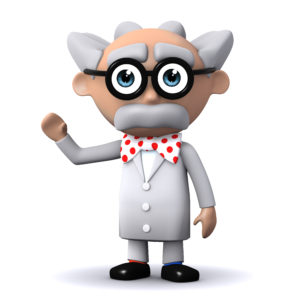Imagine a “rocket scientist”, and then take a moment to see if the picture in your head corresponds to a stereotype?
What if every time someone said ‘rocket scientist’ your brain had to sift through a number of possible images that would fit with that description? If it was being exhaustive, your brain would pull out each possibility from a catalog including men and women of all colors, shapes and sizes wearing all sorts of accessories, only some of which would include spectacles and wild, white hair.
It sounds tiring, because it is. And thankfully, our brains do not spend valuable resources procuring and selecting from every possibility. Instead, our brain makes immediate assumptions and conjures up pictures that fit for the sake of making sense of the world around us quickly and efficiently. This happens at a cost, however, of not necessarily having every bit of information required to draw a detailed and truthful conclusion.
Our brain’s fundamental, but mostly unconscious system for making time-saving guesses and assumptions are and were protective and helpful most of the time. (If our ancestors needed to be able to observe all four legs, the tail and the head to know a tiger was a tiger, their descendants (us) probably wouldn’t be here.) You can think of these time-saving guesses like the software that is written into networks of neurons. It might work well generally, but it’s always possible to find conditions under which it doesn’t. Many great examples of software bugs in our brain can be revealed by optical illusions. Here is a favorite of ours.
These conditions under which the ‘shortcuts’ do not work well reveal for us why some situations so often result in stereotyping or implicit biases. And as we talked about in Part 1, bias-producing bugs do significant harm in educational settings.
All hope is not lost, however, because as we neuroscientists are so fond of saying, our brains are incredibly plastic!
We can work to overcome these stereotypes with:
1. Regular exposure to positive counter-stereotypes
Regular exposure to positive counter-stereotypes is necessary for both you and your students and can easily be integrated into existing curriculum. (Here is a great example of a positive counter stereotype rocket scientist)
2. Practice Filtering for the Positive
Due to our evolutionary history, most of our shortcuts are biases toward the negative (our ancestors were more likely to survive if they assumed every rustle in the bush was a tiger, rather than a bird). One evidence-based practice we recommend is simply to practice filtering for the positive. This can be done at a community level with gratitude practice (this can include group affirmations or an activity like making a gratitude poster or a loving kindness meditation) or at a personal level (write down 3 great things that happened each day during a journaling period). The items that you are grateful for can be very small, but the most important part is that you do it regularly.
While these suggestions may sound extremely simple, this regular practice will rewire your brain to adopt a more positive and accurate interpretation of both the world and your classroom. Combined with regular community-building and mirror neuron network strengthening, your class with be a place where all students can thrive.
